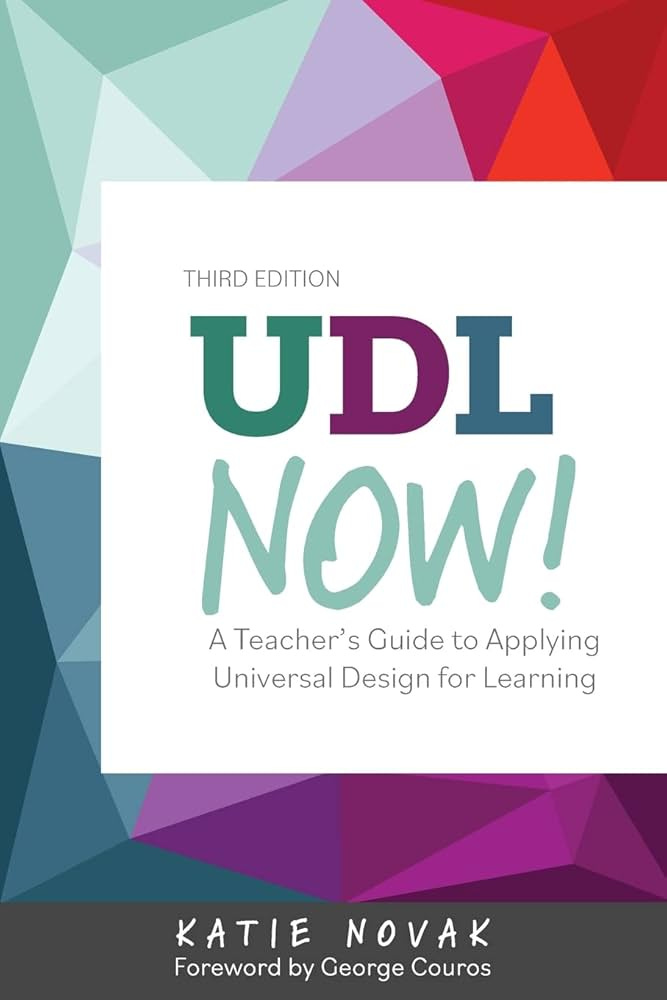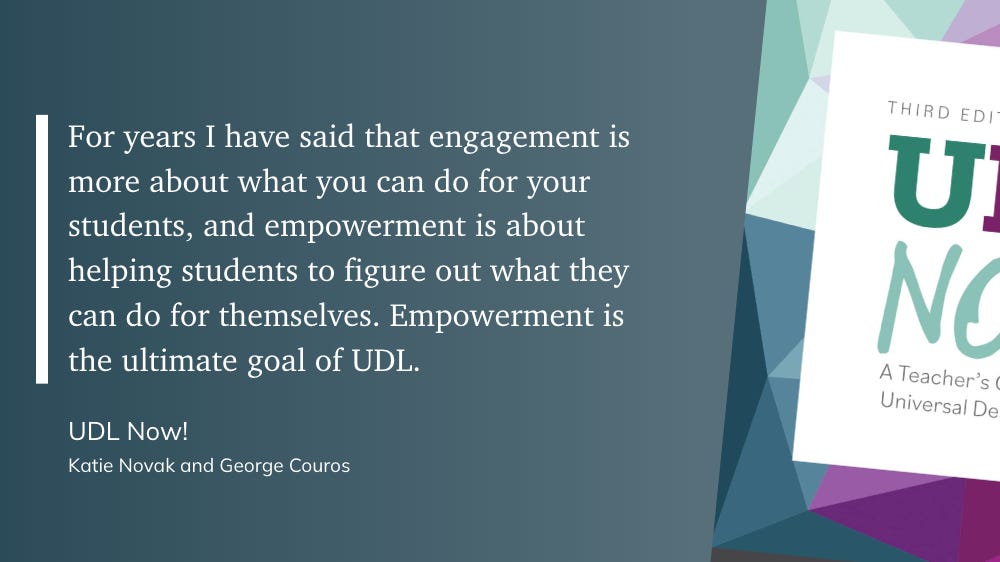Design for the Edges
Strategies for Supporting Unique Readers and Writers
The following article on designing for the edges has been on my mind lately. We see gaps between what we say we value, what our systems actually support, and we feel that dissonance. We design for “most students,” which often means we’re designing for nobody.
I originally wrote this for Choice Literacy, and I wanted to share it here so it’s accessible to you. Let me know your thoughts if you are so moved.
Take care,
Matt
One of the symptoms of my ADHD could be described as “promiscuous reading”: jumping around from one half-read book to the next.
For example, I started the novella Mapping the Interior by Stephen Graham Jones. I picked it up for $5 in Barnes & Noble while purchasing a green tea. While about one-third of the way through it, I happened upon a used copy of The Ministry for the Future by Kim Stanley Robinson. Because it was recommended by two avid readers, I dropped the former and dove into the first 100 pages of the latter.
I don’t think you need to have a diagnosis of ADHD to experience this type of challenge. And to be fair to myself, I will finish both books. But it would be easy to pathologize my reading habits. For example, my wife is very good about finishing one book before starting the next. That’s what normal readers do, I could say to myself, as if I were back in school, surrounded by reading logs and number-of-minutes-read charts.
We strive to provide resources and systems to ensure everyone can be successful. Yet in our efforts to support all readers, are we excluding the students who need our support the most?
Design for the Edges
The phrase design for the edges is about creating more inclusive and welcoming spaces for all students. It asks that we think not about what the average person needs, but what people at the margins need.
Todd Rose, a Harvard professor and former classroom teacher, found that when we create educational experiences for the average student, no one can truly fit. In his TEDxTalk, he uses the story of the U.S. Air Force from the 1950s to make his point. They had good pilots and advanced jet technology at the time, but worse results. After blaming the pilots, technology, and flight instructors, the Air Force finally realized that the cockpits were the problem. They were designed for the average pilot. A researcher, Gilbert Daniels, showed after studying 4,000 pilots that not one of them was “average.” The Air Force designed cockpits “for nobody,” Rose notes.
The solution: The Air Force refused to buy planes from the companies who built them until they started designing them for the edges. After some resistance, including the belief that this type of change would be too costly, those companies came up with innovations that were both novel and inexpensive. Most notable of these innovations was something we take for granted today: adjustable car seats.
But the benefits didn’t stop there. Creating more adaptive cockpits opened up who could be a pilot, including women and individuals at the edge of different dimensions of body size.
Even if only one person might experience an obstacle with the current setup, we strive to remove or work around that obstacle. The beauty of designing for the edges is that many more people benefit than just one or two people.
For example, we already see this with physical disabilities, including ramps for people who use wheelchairs, and crosswalk systems that talk for the visually impaired. These accommodations benefit not just people who have permanent disabilities but individuals with temporary challenges, such as those who have had astigmatism surgery for their eyes or those with a broken leg.
What does designing for the margins look like in the ELA classroom? How can these ideas support students not just becoming better at reading but also becoming confident readers?
Share Who You Are as a Reader and Writer
There may be no more effective lesson than sharing who we are as a reader and writer.
Mary Beth Nicklaus, a former secondary literacy interventionist, would write “failure stories” in front of her students on the board. It was a form of public journaling. When she wrote about the time she bought four strawberry Pop-Tarts at the school store, a girl in her class commented, “I saw you buy those.” Mary Beth modeling vulnerability and being less than perfect created a permission structure for her students to also be real in their writing. This led to reading memoirs about how others struggled with various facets of life. Mary Beth’s students saw how literacy could have many entry points for engagement as well as for processing powerful emotions.
Teachers don’t have to be this vulnerable. It can be as simple as sharing some of your favorite literature appropriate for your students. For example, as a classroom teacher I would have students vote on the next read aloud. Of the three options, I would denote which one was “Mr. Renwick’s Recommendation.” Being fifth and sixth graders, they would often choose another one, but I always got at least one student to pick up my suggested title.
Empower Students as Decision-Makers Through Conferencing and Healthy Accountability
My habit of bouncing around different books is something I would like to improve. So I now tag all the books I have started as “currently reading” in my Goodreads account. Just seeing this list, and knowing it is public, has created a healthy accountability system to finish or abandon each book.
Teachers can create similar conditions with their students.
In their reader’s notebooks, have them create three lists: books they’ve read, books they want to read, and books they are currently reading.
When conferencing with a student, start by asking them to show you their lists. This can be a jumping-off point for facilitating a conversation around their reading life.
If you notice they’re reading several books, get curious about it. You can start with some affirming questions. “Tell me about these different books you are reading. Are you finding any interesting connections between the texts?” If they are struggling to finish books, help them develop a plan for each one, such as a healthy deadline for completing one of them.
This can work similarly with a writer’s notebook, creating lists of completed pieces, works in progress, and an idea bank (also referred to as a “shrug” file). Setting up notebooks in this way gives students the space and the tools to find the right fit as they become readers and writers.
Tailor Your Classroom Library to Your Students
As a new fifth- and sixth-grade teacher, I wanted my classroom library to be filled with Newbery Award winners, the classics, and related texts. We listened to The Christmas Carol audiobook by Charles Dickens before winter break, read aloud by Jim Dale.
Yet what I wanted and what my students needed didn’t always match. For example, some of my up-and-coming readers were still at a third-grade readability level. They needed a large diet of series books they found interesting and engaging. One student I had, who had not gotten an official diagnosis of ADHD but had all the markers, devoured the Joey Pigza books. The quantity of his reading was more important than the perceived quality. (And to be clear, I enjoyed the Joey Pigza books as much as my student did.)
When we create flexible spaces and safe conditions for each reader and writer to find their right fit in your classroom, every student can access what they need.
Some questions to considering journaling around
As a student, when did you feel most supported in school? What did the teacher(s) do to allow you to be yourself?
What are some simple shifts you could potentially make to create more flexible learning environments? What would your students suggest?
What I’m Reading
UDL Now! A Teacher’s Guide to Applying Universal Design for Learning by Katie Novak (CAST, 2022)1
I referred to this resource frequently as I prepared for a workshop on supporting students with ADHD. Novak makes a strong case for embedding UDL in classrooms to level the playing field for kids. I plan to continue to use this short, practical guide throughout the school year as part of my work as a systems coach.
Quotable
Affiliate link




This comment is from Mary Beth Nicklaus, a secondary literacy interventionist in Minnesota, someone I've had the pleasure to work with in Wisconsin. She is a thoughtful and creative educator who consistently centers students and equity in her instruction. -Matt
"Hi Matt, I was especially interested in reading this current post because I am having problems putting into words what I’m trying to create in my current position as literacy interventionist for high school students in an alternative program. Not only did I find a reminder of my own story from years back, but I have the perfect words now to use when I’m trying to describe to others what I’m attempting to design for our current students -a design for the edges! Thank you so much!"